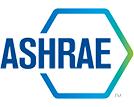As the leaves start to fall and temperatures dip, the last thing you want is to discover that your furnace doesn’t work on the first truly cold night of the season. Before winter settles in, now is the perfect time to switch on your home’s heating system and make sure everything runs smoothly. A quick early test can reveal issues before you actually need heat, saving you time, stress, and potentially expensive emergency repairs.
Why You Should Test Your Furnace Early
Most homeowners don’t think about their heating system until they feel cold themselves. By then, HVAC companies are booked solid with repair calls. Testing your furnace early will help you:
- Identify any problems while service appointments are still easy to schedule.
- Prevent being without heat during the first freeze.
- Maintain efficiency and avoid higher energy bills.
- Extend the lifespan of your equipment through early maintenance.
Checking your furnace early is a smart, preventive move that keeps your home comfortable and ready for winter weather.
How to Check If Your Furnace Is Working Properly
Testing your furnace only takes a few minutes. Here’s a safe, step-by-step way to do it:
-
Set Your Thermostat to “Heat.”
Raise the temperature a few degrees above room temperature to trigger the system. You should quickly hear the blower or burner ignite.
-
Listen and Smell Carefully.
A slight burning smell is normal if dust has settled on the heat exchanger over the summer. However, the smell should fade quickly. Loud bangs, scraping, or grinding noises, however, can indicate mechanical issues.
-
Check for Warm Air from Vents.
After the system runs for a few minutes, confirm that warm air is flowing evenly through vents in multiple rooms.
-
Inspect the Air Filter.
A clogged or dirty filter restricts airflow and forces your system to work harder. Replace it if it’s dusty or more than 90 days old.
-
Monitor the Furnace Flame (for gas systems).
The pilot or burner flame should be a steady blue color. Yellow or flickering flames could indicate incomplete combustion and should be checked immediately by a professional.
After running the system for 10-15 minutes, turn the thermostat back down and note any unusual signs such as inconsistent heating, strange sounds, or persistent odors. If you run into problems during any stage of this testing process, call us for an inspection.
Our Professional Heating Tune-Up Process
Even if your system turns on, a professional maintenance visit ensures it operates safely and efficiently. During an Allied Air Conditioning & Heating tune-up, our certified technicians:
- Inspect and clean the burners, heat exchanger, and ignition system
- Tighten electrical connections and lubricate moving parts
- Verify proper airflow and test safety controls
- Check for carbon monoxide leaks
- Calibrate the thermostat for accurate readings
A tune-up is a simple way to ensure reliable performance, prevent mid-winter breakdowns, and keep your warranty valid.
What Is the Best Time to Schedule Heating Maintenance?
Maintenance needs to be done once a year, but not necessarily at the beginning of a season. Remember, testing your system also gives you time to consider upgrades, like installing a high-efficiency furnace or a smart thermostat.
Call Allied Air Conditioning & Heating for Professional Furnace Service
If your heating system fails to start, makes strange noises, or doesn’t produce warm air, don’t wait until temperatures plummet. Schedule a heating maintenance or heating repair with Allied Air Conditioning & Heating Corporation today.







